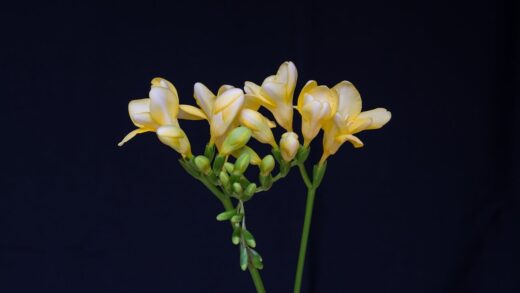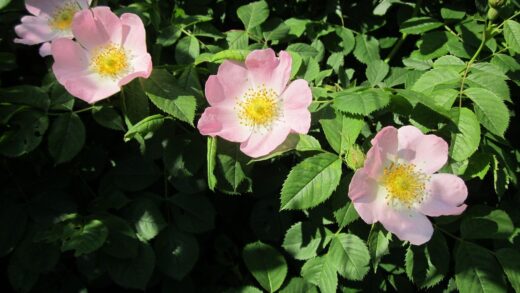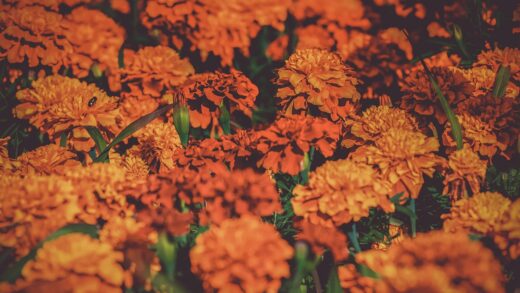One of the most compelling reasons to include blue oat grass in a landscape design is its exceptional hardiness and general resistance to common garden ailments. This is not a plant that requires constant vigilance or a regimen of chemical treatments. Its tough, fibrous foliage and its preference for dry conditions make it an inhospitable target for many of the pests and diseases that plague more delicate perennials. However, like any living organism, it is not entirely invincible. The most significant threats to its health are not insect infestations but rather environmental and cultural issues, primarily related to excessive moisture, which can lead to fungal diseases like root and crown rot.
The inherent resilience of blue oat grass means that in a well-managed garden, you are unlikely to encounter major problems. Deer and rabbits, which can be a nuisance for many garden plants, typically show no interest in this grass, leaving it untouched. This makes it an excellent choice for gardens in areas with high wildlife pressure. Its foliage seems to be unpalatable to them, allowing it to maintain its perfect, mounded form without the need for repellents or protective barriers.
Similarly, insect pests rarely cause significant damage to blue oat grass. While minor infestations of aphids or spider mites are theoretically possible, especially if the plant is under stress, they are very uncommon and seldom require intervention. The plant’s robust nature allows it to withstand minor insect activity without any noticeable impact on its overall health or appearance. A healthy, properly sited plant is its own best defense against pests.
The primary area of concern for the health of blue oat grass lies with fungal diseases, which are almost exclusively triggered by improper growing conditions. These are not problems that attack a healthy plant but rather opportunistic infections that take hold when the plant’s defenses are compromised, usually by being planted in heavy, poorly drained soil or by being overwatered. Prevention, through careful site selection and soil preparation, is therefore the most effective strategy for disease management.
Preventing crown and root rot
The single greatest threat to the life of a blue oat grass plant is crown and root rot. This devastating condition is not caused by a primary pathogen attacking a healthy plant, but rather by soil-borne fungi that thrive in anaerobic, waterlogged conditions. When the soil around the base (crown) and roots of the plant remains saturated for extended periods, these fungi proliferate and begin to attack the plant’s tissues. This is why providing excellent drainage is the most critical aspect of caring for this species.
More articles on this topic
Prevention of rot begins before the plant even goes into the ground. Selecting a site with naturally sandy or gravelly soil is ideal. If your garden has heavy clay, you must amend the soil thoroughly to improve its structure and porosity. Incorporating generous amounts of coarse sand, pine bark fines, or grit will create air channels in the soil, allowing water to drain away from the root zone quickly. Raising the planting bed can also be an effective strategy to elevate the plant’s crown above the surrounding grade and further enhance drainage.
Proper planting depth is another crucial factor in preventing crown rot. The plant’s crown—the point where the stems meet the roots—should be positioned at or slightly above the level of the surrounding soil. If the crown is buried too deeply, soil and mulch can trap moisture against the base of the stems, creating a perfect breeding ground for rot-causing fungi. When applying mulch, always be sure to pull it back from the immediate base of the plant to maintain good air circulation.
Once the plant is in the ground, proper watering practices are essential for continued rot prevention. Blue oat grass should be watered deeply but infrequently, allowing the soil to dry out completely between waterings. This is especially important during the cooler, wetter months of autumn and winter, when the plant is dormant and soil takes longer to dry. Overwatering during dormancy is a common and often fatal mistake.
Dealing with fungal rust
While rot is the most serious disease, a more common, though less threatening, fungal issue that can occasionally affect blue oat grass is rust. Rust is a disease caused by various species of fungi, and it manifests as small, rusty-orange or brownish pustules that appear on the leaves of the grass. While an outbreak can be unsightly and may detract from the plant’s silvery-blue appearance, it is rarely fatal and can usually be managed with simple cultural adjustments.
More articles on this topic
Rust fungi thrive in conditions of high humidity and prolonged leaf wetness. Therefore, outbreaks are most likely to occur during periods of cool, damp weather in the spring or autumn. Plants that are situated in areas with poor air circulation or that are crowded by other plants are more susceptible, as their foliage takes longer to dry after rain or dew. Over-fertilizing with high-nitrogen feeds can also increase susceptibility by promoting lush, soft growth that is more easily infected.
The first step in managing rust is to improve the environmental conditions around the plant. If possible, thin out or prune back neighboring plants to increase airflow around the blue oat grass clump. This will help the leaves dry more quickly and create a less hospitable environment for the fungus to develop. It is also important to avoid overhead watering, which wets the foliage. Instead, use a soker hose or water wand to apply water directly to the soil at the base of the plant.
If you notice rust on your plant, you can help to control its spread by removing the most heavily infected leaves. For a more severe infection, you may choose to cut the entire clump back in the early spring, which will remove the infected foliage and allow fresh, healthy new growth to emerge. While chemical fungicides are available for treating rust, they are often unnecessary for blue oat grass and a change in cultural practices is usually sufficient to resolve the issue.
Common insect pests
Blue oat grass is remarkably untroubled by insect pests, which is a significant advantage for low-maintenance gardening. Its tough, somewhat coarse foliage is simply not a preferred food source for the vast majority of common garden insects. This natural resistance means that you will likely never need to use insecticides on this plant, which is beneficial for the local ecosystem and the health of beneficial insects in your garden.
On very rare occasions, if a plant is severely stressed by other factors such as poor growing conditions or extreme drought, it might become more vulnerable to common sap-sucking insects like aphids. Aphids are small, soft-bodied insects that typically congregate on new growth, feeding on the plant’s juices. A minor aphid population is usually not a cause for concern and can often be controlled by natural predators like ladybugs and lacewings. If the infestation is more noticeable, a strong jet of water from a hose is often enough to dislodge them.
Spider mites are another potential pest that might appear during hot, dry weather, especially on plants that are water-stressed. These tiny arachnids are difficult to see with the naked eye, but their presence can be identified by fine webbing on the plant and a stippled, yellowish appearance on the foliage. Ensuring the plant is adequately hydrated during periods of drought is the best preventative measure. As with aphids, a strong spray of water can help to control a minor infestation.
It is important to emphasize that pest problems on blue oat grass are the exception, not the rule. A healthy, well-sited plant is almost always pest-free. If you do find insects on your grass, it is often a secondary issue and a sign that the plant is struggling for another reason. Before reaching for a pesticide, first assess the plant’s primary cultural conditions—sunlight, drainage, and water—as addressing a deficiency in one of these areas will often resolve the pest problem indirectly by restoring the plant’s natural vigor and defenses.
Integrated pest management strategies
The best approach to managing the health of blue oat grass is through an Integrated Pest Management (IPM) strategy, which prioritizes prevention and cultural controls over chemical interventions. The core principle of IPM is to create a healthy garden ecosystem where plants are naturally resilient and pest and disease problems are kept to a minimum. For blue oat grass, this strategy aligns perfectly with its needs and requires very little active effort from the gardener.
The foundation of an effective IPM program for this grass is proper site selection and soil preparation. By providing the full sun and excellent drainage that the plant requires, you are eliminating the primary stress factors that can make it susceptible to disease. A plant in its ideal environment is a strong plant, capable of fending off most potential problems on its own. This proactive approach is far more effective than any reactive treatment.
Regular monitoring is another key component of IPM. Take time to observe your plants regularly, looking for any early signs of stress or disease, such as yellowing leaves or the appearance of fungal spots. Catching a problem early makes it much easier to manage. For example, noticing the early signs of rust allows you to improve air circulation or remove a few leaves before the infection becomes widespread.
If a problem does arise, IPM dictates that you should use the least toxic control methods first. For blue oat grass, this rarely involves more than simple mechanical or cultural controls. This could mean “combing” out dead foliage to improve airflow, removing rust-infected leaves by hand, or adjusting your watering schedule. Chemical pesticides and fungicides should always be a last resort, reserved only for severe problems that cannot be controlled by other means, a scenario that is exceptionally rare for this durable ornamental grass.
📷: Drew Avery, CC BY 2.0, via Wikimedia Commons


















